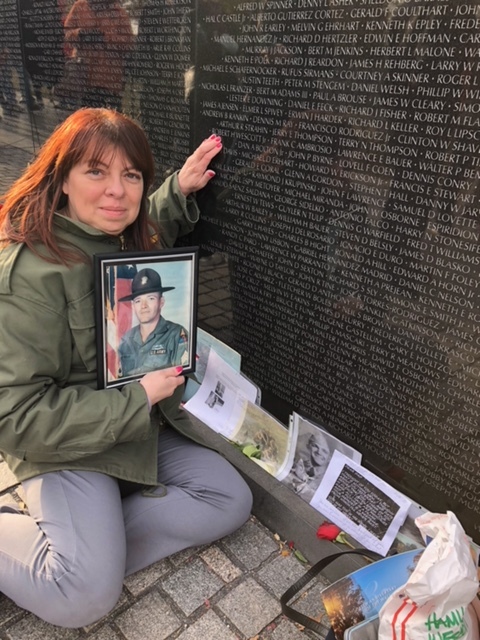Walking in Her Father’s Footsteps
Krysteen Wescott Carries A Torch For The Vietnam Education Center Because It's Family
By Raoul Dennis // @suitemagazine
“I take pride in the type of man that my father was,” says Krysteen Wescott, a good Samaritan for the cause of the Education Center at The Wall. “All the men that were on that wall were brave enough to stand up for what they believe in. Each man brings a history and the families are part of that history.”
The Education Center at The Wall will be an interactive learning facility on the National Mall where our military heroes' stories and sacrifice will never be forgotten. Vietnam Veteran’s Memorial Fund (VVMF) is raising the approximately $130 million to have it built.
Wescott is developing into an activist lobbying families around the nation to encourage them to share pictures of their young men who made the ultimate sacrifice during the Vietnam War. She wants to be sure that their inclusion will assure that their story will be woven into the center’s presentation.
She has been researching, emailing and calling hundreds of families she says, volunteering her time toward assuring that as many of the 58,000 American soldiers killed in Vietnam are adequately represented in the center.
Sgt. First Class Robert Hyatt Wescott Jr.
Sgt. First Class Robert Hyatt Wescott Jr. was 34 when he died in Vietnam. His daughter, Krysteen, was only seven at the time. But it wasn’t until she became an adult and joined in the name reading ceremony (that occurs every five years) that she truly began to know him.
“I have been welcomed at Fort Lewis,” she says of the work tracing the places that her father went as he served over 50 years ago. “I went to places that he had been. He was there at a different time but he was still there. I’ve gone to the grave yard, church, gas station, the barber shop. His essence is still there.”
But then Wescott’s drive for the center deepened. Since December 2017, she began tracking down the families of young men whose pictures were missing from the Center since the groundbreaking in 2012. She says that she has spoken to at least 400 families and got 650 pictures sent into the center. She started by writing emails to families in New York, where she’s based. And then she began reaching out across the nation.
When asked why she is taking on the effort Wescott says, “they should be more than a name on a wall.”
She talks about the thousands of broken lives left in the wake of the war referring to the weddings and births and bonds that didn’t happen because of the war. Wescott says the controversial nature of the war created a unique type of mourning for which closure is still not realized.
“People talk to me because they know that I have been there too,” she explains. “They see me as one of them who knows what it’s like to have sacrificed so much and then be shut out at the same time.”
Wescott says that as the Vietnam families grow older, the stories of the fallen grow dimmer.
“They should have their stories told because they are the forefront for what should never happen again with our veterans,” she says.
When asked if it’s worth it, the research activist says it ensures that their sacrifice is not forgotten and that their humanity is recognized.
“A Vietnamese man in his 70s approached me at the Wall where I was mourning my father. He explained that he was a young boy at the time in Vietnam. He thanked me for my father because he said he would not be free today if it were not for them. So my dad didn’t die for nothing. None of them did.”
Wescott says that the biggest challenge is that soldiers from urban areas of the nation are hardest to track in part because research anchors (like schools, apartment buildings) that are part of any research change more rapidly in cities.
More than 60% of the U.S. population was not alive during the Vietnam War. Now, more than ever, we need to educate younger generations about the significance of the Vietnam Era and the important role that The Wall played in the history of our nation.
According to the Education Center at The Wall, the center will:
- Put a face to every one of the more than 58,000 names listed on The Wall and help ensure that the Memorial will continue to speak about the importance of honoring our veterans and remembering those who died serving their country.
- Share some of the hundreds of thousands of objects left at The Wall by families, military comrades, and others over more than three decades.
- Provide a historical account of the events that took place on the battlefield and the home front during the Vietnam Era.
- Tell the story of how The Wall became a site of individual grief and public mourning in the years following a painful and divisive war.
- Include voices of veterans who returned to tell us their stories and preserve memories of those who did not.







